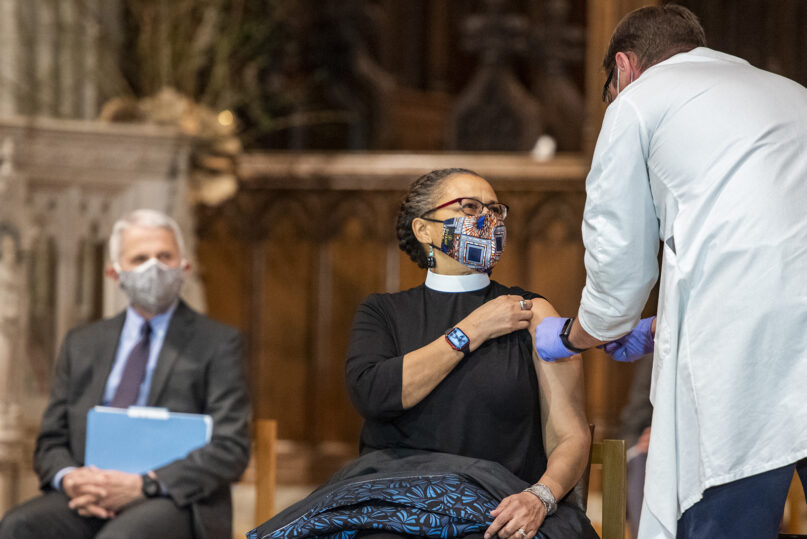The spiritual symbolism of the numbers (2)
From Orpheus and Pythagoras during the medieval Proto-Renaissance and Dante Allegieri to the heterodox Islamic cult
On the other hand, the year 1300 AD. It marks for Dante the middle of his life (then he turns 35), and for him it is a watershed of time – 65 centuries of the movement of the heavens have passed to him, and after him will continue for another 65 centuries. Or twice in the 65th century they make a total of 130 centuries or 13,000 years, and the 13 centuries since the beginning of the Christian calendar are one tenth of all. The number 65 is remarkable in its own way: adding its numbers we get again 11, which in turn decomposes the numbers 6 and 5, respectively the numerical symbolism for the macrocosm and the microcosm. Translating 65 to the numerical value of the letters from the Latin we get LXV, which shifted give us LVX (luxury = light), reminding us of the Masonic era of True Light; on the other hand, 65 in Hebrew is the divine name Adonai, which is alluded to in Purgatory, XX, 94-96 with the literal quotation of the Templars’ exclamation “Somewhere Adonai” (in Hebrew “Revenge, my Lord”).
Space Cycle Theory: The period of 13,000 years is half the time for the transfer of equinoxes with a difference of 40 years or less than half a century. The total period is, in fact, 25,920 years, half of which is 12,960 years; and this half-period is the “great year” of the ancient Persians and Greeks. This special year was considered by the ancients to be a time between two renewals of the world, which in the earthly history of mankind can be defined as the interval between two cataclysms in which entire continents disappear (it was in the last one that Atlantis perished).
Cyclical laws find their application in different degrees: historical cycles, geological cycles, purely cosmic cycles, with the corresponding divisions and subdivisions, which further multiply the possibilities for their application (cyclic numbers are 72, 108 and 432, which are directly related to the number 25920, to which they are connected by the geometric division of the circle). In Dante we find a perfect overlap with the symbolic chronology among the traditional Eastern doctrines, in which there is only a difference in form in the understanding of the “great year” and the theory of the four ages of mankind, which we find in Greco-Roman antiquity, Hinduism and the peoples of Central America.
We could make an allusion between the four ages (gold, silver, bronze and iron) in the figure of the “Cretan old man” (Hell, XIV, 94-120), who is identical with the dream statue of Nebuchadnezzar (Book of St. Daniel). , Chapter II) – such a unique image from the beginning of the 17th century we have on the east wall of the old dining room of the Bachkovo Holy Monastery; and the four rivers in Hell, which for Dante are in some respect compared to those in Paradise on earth; all this would be difficult to interpret without reference to cyclical laws.
In the Middle Ages, Pythagoras’ teaching (576-496 BC) about numbers as an ontological principle was generally highly valued – Pythagoras was depicted on the west façade of Chartres Cathedral as the personification of arithmetic. (A similar image of Pythagoras is found in the refectory of the Bachkovo Monastery in the iconographic composition “Jesse’s Tree” among the 12 representatives of ancient wisdom, science, art: Plato, Aristotle, Plutarch, Socrates, Diogenes, Aristophanes, Cleomenes, the prophetess Sybil).
The Pythagoreans considered silence to be one of the greatest human virtues, which is why they subjected those who wished to enter the school to a five-year silence in order to test their self-control. An “Introduction to Arithmetic” by the neo-Pythagorean Nicomachus of Gerasa (2nd century) was widely used, and the work of the Neoplatonic philosopher Ambrose Theodosius Macrobius (c. 4 – early 5th century), Scipio’s Dream, was used. in the Middle Ages as one of the important sources for ancient Platonism.
In grammar, economy meant “the right choice of language.” “Teacher and interpreter of numbers” – the Greeks, the creators of all arts, called her arithmetic, expressing in this name the dignity of numbers and believing that the predominant dignity of things is in numbers and that arithmetic in its nobility is a kind of their mistress. Dante had a huge influence on medieval thought, but at the same time he drew on his predecessors, which is why we cite some of the theses of prominent Western European religious thinkers from the so-called “Renaissance of the 12th century”, Proto-Renaissance, Pre-Gothic.
Adelard of Bath (born 1070 in Bath near Bristol, England), states (see On the Identical and the Different, – In: “Five Medieval Philosophical Treatises”, Sofia, 1989): “The first of them, which surpasses in its majesty all the other three and subordinates them to itself, and in whose garment you see the innumerable imprints of the numerical signs woven, directs and governs all that is subject to numerical difference. That is why all visible things are subordinated to the number, and they are subordinated to it by necessity.
Indeed, everything that exists is either one or many. The number determines through itself – surely and naturally – even the limit of the immeasurable universe. Without this companion of mine, the multiplicity of individual things becomes indefinite and disorderly. This can be well understood if one completely forgets the number of one’s belongings and begins to collect them randomly and without distinguishing them. That is why I claim that it is necessary not only for those you see standing next to it, but that it is undoubtedly useful for all beings, because it removes the disorder in them and distinguishes them.
Master Thierry of Chartres wrote in his work, On the Acts of the Six Days. On the Divine Nature 30-47 ”(cf. In: Five Medieval Philosophical Treatises, Sofia, 1989): “30. So let us be helped by the four kinds of reasonable evidence that lead man to knowledge of the Creator, namely, the arithmetic, the musical, the geometric, and the astronomical. These tools must be used briefly in theology to discover the Creator in created things, and to reasonably prove what we have assumed. Unity precedes all otherness, because unity precedes duality, which is fundamentally all otherness. Because the other always speaks for two things. Therefore, unity precedes every variability, since every variability arises substantially from duality.
31. …. unity is the very divine nature. And the divine nature is a form of the existence of individual things. Because just as one thing is bright thanks to nan light and warm thanks to heat, so individual things receive their being from God. That is why it is rightly said that God is everywhere with His whole being. Therefore, unity is a form of existence of individual things. Whence it is rightly said: “Everything that exists exists insofar as it is one.”
Every multiplicity is created by true unity, that is, by God. Therefore, in the divine nature there is no multiplicity, and therefore no number.
36. … unity creates every number, and the number is infinite, then unity by necessity cannot have a limit of its power. Therefore, unity is omnipotent in the creation of numbers. But the creation of numbers is the creation of things. Therefore, unity is omnipotent in the creation of things. ….
Clarenbald of Arras (One of Thierry’s famous disciples at Chartres. He has been an archdeacon in Ara since 1152 and died after 1170. His work essentially touches on important theoretical issues discussed in the 12th century: faith and reason, unity and multiplicity, for matter and form, for eternity and time, etc.) in Boethius’s Commentary on the Trinity (In: Five Medieval Philosophical Treatises, Sofia, 1989) reflects on the numerical dimensions of the Divine: “Unity avoids division, it loves what is equal to it, that is, unity, and equality of being and unity are connected by mutual love. Here love and attachment are not born and are not born, but arise from unity and equality with unity, and not from one, but from both. Because love and affection do not come from just one.
Thus, the love and connection, resulting from the unity and from the equality with the unity, are the Holy Spirit, because the Father is the unity, and the Son – the equality in being. This love, which is the Holy Spirit, is undoubtedly in both. Because they are both the same God. Therefore, the Holy Spirit is God, no different from the Father and the Son. Because God has nothing but God. Boethius rightly adds another reason: “And the fact that, when called the Father and the Son and the Holy Spirit, the word” God “is repeated three times, does not mean that the three units do much in number in what they themselves are, if we mean the things being calculated, not the number itself. Because there the repetition of unity makes many. And in the number that is contained in the calculated things, the repetition of the singularities and the plurality are not the reason for the numerical difference of the calculated things. “




 news conference at the Catholic Diocese Centre in Hong Kong May 18, 2021.” class=”wp-image-90493″ srcset=”https://catholicleader.com.au/wp-content/uploads/2021/05/Hong-Kong-bishop.png 750w, https://catholicleader.com.au/wp-content/uploads/2021/05/Hong-Kong-bishop-300×150.png 300w, https://catholicleader.com.au/wp-content/uploads/2021/05/Hong-Kong-bishop-600×300.png 600w, https://catholicleader.com.au/wp-content/uploads/2021/05/Hong-Kong-bishop-360×180.png 360w” sizes=”(max-width: 750px) 100vw, 750px”/>
news conference at the Catholic Diocese Centre in Hong Kong May 18, 2021.” class=”wp-image-90493″ srcset=”https://catholicleader.com.au/wp-content/uploads/2021/05/Hong-Kong-bishop.png 750w, https://catholicleader.com.au/wp-content/uploads/2021/05/Hong-Kong-bishop-300×150.png 300w, https://catholicleader.com.au/wp-content/uploads/2021/05/Hong-Kong-bishop-600×300.png 600w, https://catholicleader.com.au/wp-content/uploads/2021/05/Hong-Kong-bishop-360×180.png 360w” sizes=”(max-width: 750px) 100vw, 750px”/>


